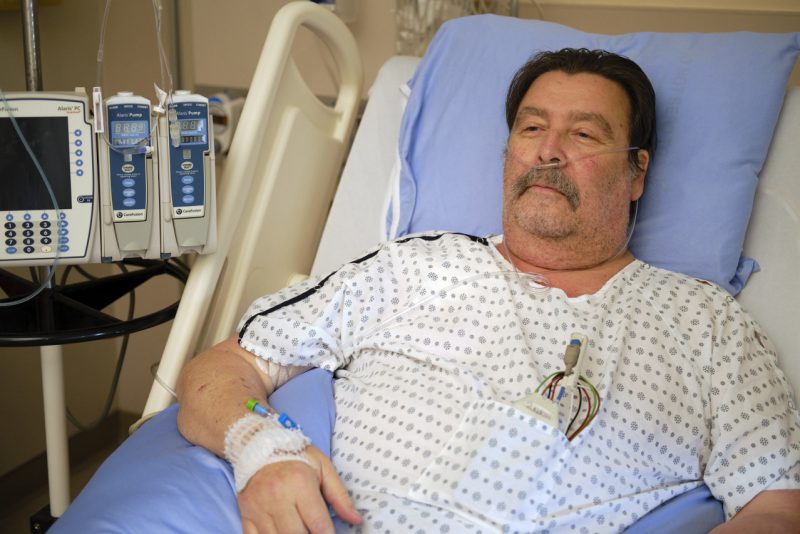
“This heart is pretty much getting worn out,” says Carmon, who was diagnosed with hypertrophic cardiomyopathy. “I will probably end up having a heart transplant.”
Over the years, Carmon has felt like his heart is bouncing around in his chest. He’s fainted, been hospitalized, and now just wants to be well enough to spend time with his family.
“I would just like to be at home with my wife, and I would like to have my grandkids around me,” he says. “I feel like I have been shorted so much time with them.”
Carmon was sent from Victoria to Royal Columbian after the wire that paces the left heart in his ICD system failed. The wires, known as leads, almost always go through a large vein in the left shoulder directly to the heart. Carmon’s case became a challenge because there were already four leads in the left shoulder vein that left no room for new ones. Carmon was referred to electrophysiologist Dr. Stanley Tung.
“Carmon came over so that we can put a new lead directly inside of the left heart,” explains Dr. Tung. “In British Columbia, only Royal Columbian Hospital has the capacity to do this inside-the-heart approach.”
Typically, Dr. Tung would use a left-sided approach as designed by the technology. But in this case, that was not possible. So, working in Royal Columbian’s donor-funded Multipurpose Interventional Suite with a team, Dr. Tung approached from the right. That made it a first for British Columbia, and only the third ever case in North America.
“Coming from the right side is uncommon, and that’s why this is a very unique case,” explains Dr. Tung. “Fortunately it went smoothly, and the patient now has a new lead pacing the left side of the heart from the inside.”
Carmon spent about two weeks at Royal Columbian before he returned to Victoria. He’s grateful to Dr. Tung for improving his quality of life in the hopes he can get a transplant in the future.
“I am really impressed with his skill,” Carmon says. “He made me feel good about things, and explained what’s happening. He definitely knows what he is doing.”
